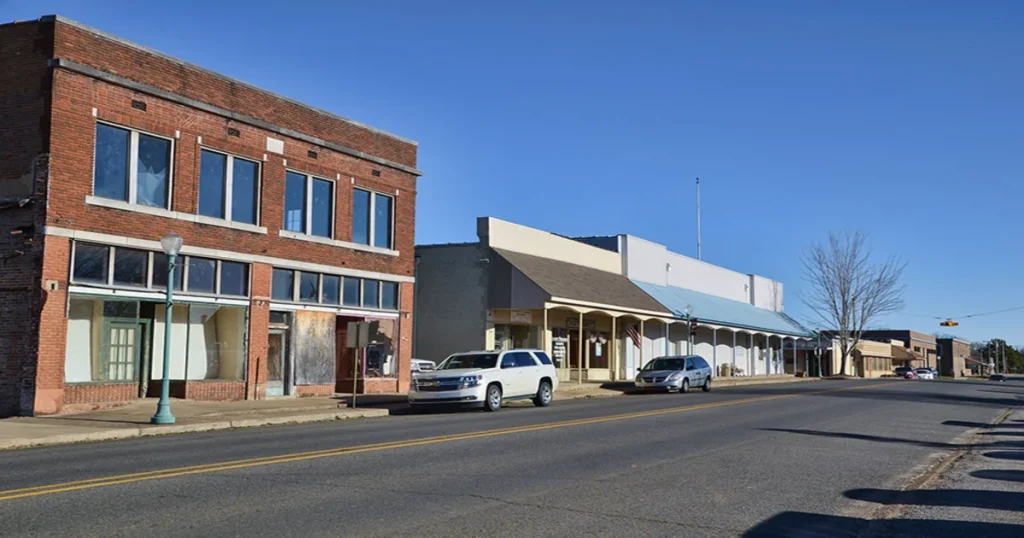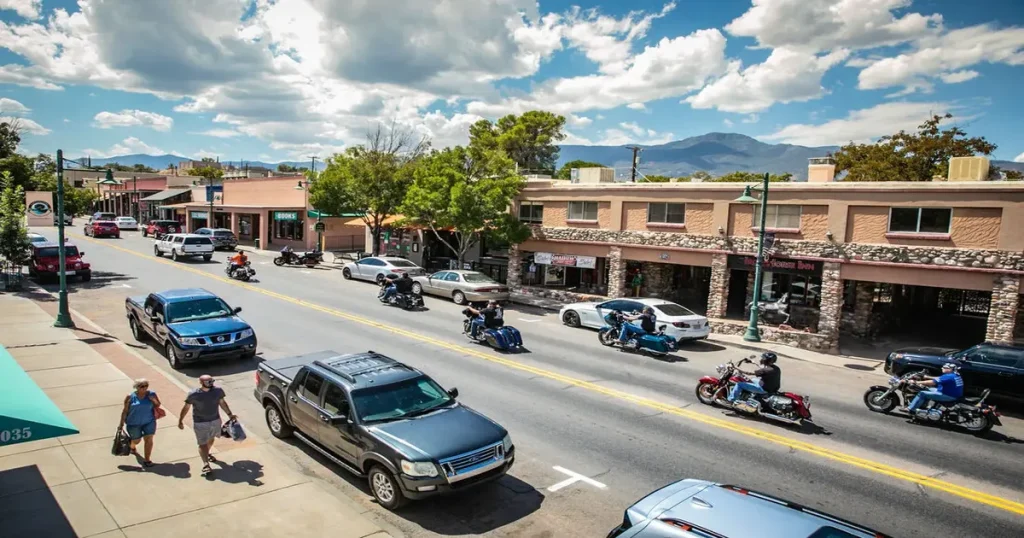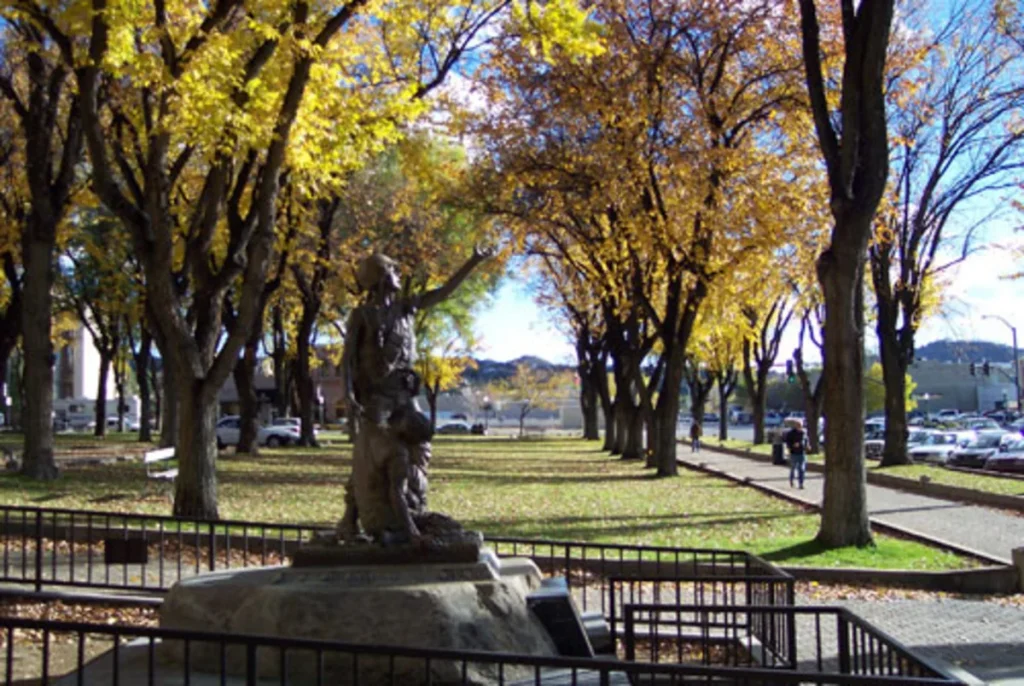In the heart of Arizona, downtown Prescott stands as a testament to time, blending the rich tapestry of its historical past with the pulse of modern-day life. Central to this delicate balance are the various preservation techniques used in downtown Prescott.

These efforts ensure that the city’s core retains its charm, evoking a sense of nostalgia while remaining relevant and functional in today’s era.
Architectural Conservation
In the quaint spaces of downtown Prescott, architectural conservation is a delicate art, entwining respect for historical integrity with the pragmatism of modern adaptations. The storied building facades, each a narrative of architectural styles and materials from bygone eras, are preserved with meticulous attention to detail, blending traditional techniques with modern interventions.
Internal structural preservation is approached with a profound understanding of the essence of each building, ensuring modern reinforcements and adaptations do not overshadow the original character. Furthermore, adaptive reuse breathes new life into old structures, allowing them to serve contemporary purposes while maintaining their historical spirit.
This comprehensive approach to architectural conservation ensures that each brick and beam continues to whisper tales of Prescott’s rich history while standing resilient in the modern landscape.
Historical Building Facades
Bricks, mortar, and wood have been the bedrock of Prescott’s structures. The facades of these buildings, often ornate and echoing designs popular in their heyday, are integral to the city’s aesthetic. Over time, these materials weather, requiring sensitive restoration that retains authenticity.
The National Trust for Historic Preservation emphasizes the importance of conserving these historical facades, showcasing their relevance not just in preserving history, but also in fostering community pride.
Similarly, modern techniques have been adapted to ensure the longevity of these facades. Sealants, specialized cleaning techniques, and careful replication of materials keep the buildings looking their best. A good example is the famed Whiskey Row, where each building’s exterior tells a unique story, cared for and maintained to stand tall in the modern era.
Internal Structural Preservation
While the exteriors draw the eye, a building’s strength lies in its bones. Maintaining the integrity of older buildings involves a delicate balance. For instance, old wooden beams might be reinforced with steel ones, preserving the original while ensuring safety. The International Council on Monuments and Sites has detailed guidelines on such integrations.
Adapting buildings to modern needs without compromising their historic integrity is a challenge. For instance, retrofitting them for modern electrical and plumbing systems requires finesse. This involves collaboration between historians, architects, and urban planners.
Adaptive Reuse of Buildings
One of the most sustainable methods of preservation is adaptive reuse. Essentially, it means repurposing old buildings for new functions. A textile mill might become a trendy loft apartment complex, or a historic fire station might house a modern bistro. Prescott has several such tales, where old meets new in harmony.
Take, for instance, the old railroad depot that’s been transformed into a bustling community center. It honors the building’s history while serving the city’s current needs. This blend of past and present ensures that while the buildings’ purposes evolve, their essence remains untouched.
Urban Landscape Preservation
Urban Landscape Preservation in downtown Prescott is a meticulous endeavor to maintain the integrity of public spaces, street layouts, and green areas that are foundational to the city’s character and history. The traditional street layouts, a living reflection of the city’s urban evolution, are preserved with innovative solutions to integrate modern infrastructure needs without compromising historical designs.
The conservation of parks and public spaces goes beyond maintaining greenery; it is about preserving communal spaces that have been venues for community interaction and shared experiences for generations.
In essence, urban landscape preservation in Prescott is a harmonious blend of conservation and innovation, aimed at sustaining the aesthetic, cultural, and communal aspects of the city’s public spaces, ensuring they continue to be a source of community pride and heritage.
Maintaining Traditional Street Layouts
The maze-like alleys and broad avenues of downtown Prescott speak of urban planning from another era. Maintaining these layouts is often a logistical challenge, especially with the requirements of modern transportation.
But the rewards, both aesthetic and cultural, are immense. These pathways have been witness to countless parades, festivals, and everyday life over the decades.

Blending the old with the new requires innovative solutions. For instance, the introduction of pedestrian-only zones can both preserve the historic street design and cater to modern-day shoppers and tourists. The Urban Land Institute has praised such initiatives for their effectiveness in urban conservation.
Parks and Public Spaces
Green lungs amidst urban sprawls, parks, and public spaces in downtown Prescott are oases of calm. They’re reminiscent of times when town squares were the epicenters of community activity. Preserving these spaces is not just about keeping green patches; it’s about holding onto shared communal memories.
Consider the Courthouse Plaza, a historic green space that’s seen countless community events. Keeping it pristine while making room for modern amenities requires careful planning. Programs like “Adopt a Park,” where local businesses chip in for maintenance, is a testament to the community’s commitment to its shared spaces.
Cultural Heritage Protection
Cultural Heritage Protection in downtown Prescott is more than mere conservation of objects and places; it’s a living, breathing endeavor to safeguard the essence of a community steeped in rich traditions, arts, and culinary legacies.
This involves the meticulous curation of local arts and crafts, resonating with stories and skills passed down through generations and the lively reenactment of historical events that paint a vivid picture of the city’s vibrant past. The culinary heritage, a delicious melange of age-old recipes and modern renditions, serves as a delectable testament to the city’s evolving palette.
Protecting these cultural strands is not just about preserving the past; it’s about ensuring that the threads of history continue to weave into the social and cultural fabric of Prescott, enriching it for future generations.
Local Arts and Crafts Preservation
The art scene in Prescott is deeply rooted in its history. Traditional crafts, passed down through generations, are not just a source of local pride but also an economic driver.
Workshops, museums, and markets dedicated to these crafts ensure their survival in the age of mass production. The Smithsonian Institution has often highlighted the significance of local arts and crafts in preserving a city’s cultural identity.
On the other hand, modern artisans bring their own twist to these traditional crafts, ensuring they resonate with younger generations. Collaborative efforts between old-guard craftsmen and newer artists result in unique creations that bridge the time gap.
Historical Events and Reenactments
The Gold Rush, frontier tales, and indigenous histories come alive in Prescott through historical events and reenactments. These are not just for tourists; they’re a reminder for locals of their rich lineage. Events like the annual Prescott Rodeo transport attendees back in time, letting them experience the city’s storied past firsthand.
Educational institutions and local governments often collaborate in organizing these events. They serve a dual purpose: entertainment and education, ensuring the city’s history remains accessible and enjoyable for all.
Culinary Heritage
Food is history you can taste. Downtown Prescott’s culinary scene is a delectable blend of old and new. Traditional diners serving age-old recipes stand shoulder to shoulder with modern bistros. This culinary heritage, detailed by outlets like Eater, is a testament to the city’s evolving yet anchored culture.
While some recipes have been handed down unchanged for generations, others have been adapted for modern palates. Yet, the essence of Prescott remains strong in every bite.
Preservation Legislation and Policies
Legislation and policies form the structural backbone of preservation initiatives in downtown Prescott, providing a regulated and structured approach to conservation endeavors. These legislative frameworks are meticulously designed to safeguard the city’s historical and cultural heritage, encompassing individual landmarks and broader historic districts.
By outlining clear guidelines and norms for restoration and modification, they ensure the authentic essence of structures is retained. Furthermore, the introduction of grants and financial incentives stimulates and supports preservation activities, making them feasible and sustainable.

These laws are continually reviewed and refined, incorporating public opinion to resonate with the needs and aspirations of the community. The confluence of legal frameworks and financial support mechanisms fortifies Prescott’s commitment to preserving its invaluable legacy while fostering community pride and identity.
Local Preservation Ordinances
Laws tailored to Prescott’s unique needs form the bulwark of its preservation efforts. These ordinances protect everything from individual landmarks to entire historic districts. They set out guidelines on modifications, ensuring any changes are in line with the city’s character. The National Park Service provides resources for such local legislation, ensuring they’re both effective and fair.
Regular reviews ensure these laws remain relevant. Public consultations are a key aspect, as the community gets a say in the future of their beloved landmarks.
Grants and Financial Incentives
Funding preservation is as crucial as the intent. Grants, both local and federal, ensure that money is not a constraint in keeping Prescott authentic. These are often combined with tax incentives for businesses and homeowners who take on restoration projects.
For example, the Historic Preservation Grant Program has been instrumental in several restoration projects in downtown Prescott. It’s a testament to how financial tools can be used to further cultural and historic preservation.
Community Engagement in Preservation
Community engagement stands as the cornerstone in the architectural and cultural preservation of downtown Prescott. The citizens, local historians, and preservation enthusiasts form a synergistic relationship, collaborating and contributing to ensure the conservation of the city’s rich heritage.
It is this sense of communal responsibility and shared passion that fuels grassroots movements, educational initiatives, and volunteerism. The community’s active involvement brings a diverse and rich perspective, ensuring that preservation efforts are holistic, inclusive, and deeply rooted in local history and values.
Through various platforms and organizations, community members participate in discussions, decision-making processes, and hands-on preservation activities, echoing the shared commitment to safeguarding Prescott’s historical essence for future generations.
Role of Local Historians and Enthusiasts
The unsung heroes of preservation in Prescott are the local historians and enthusiasts who dedicate their time and expertise. Their grassroots efforts, from research to restoration, breathe life into the pages of history. Collaborative platforms, like the Prescott Historical Society, facilitate these passionate individuals in their endeavors.
Furthermore, their intimate knowledge of local tales, legends, and facts adds depth to the preservation process. Whether it’s identifying a previously unknown historic site or offering insight into traditional practices, these local experts play a pivotal role.
Educational Programs
To ensure the future generation inherits the passion for preservation, educational programs play a significant role. Schools and colleges often collaborate with historic societies to curate curriculums that offer a deep dive into Prescott’s past.

Field trips to historic sites, workshops on traditional crafts, and interactions with local historians make history tangible for students.
Such initiatives ensure a seamless transition of the preservation baton from one generation to the next. They also help in fostering a sense of pride and belonging among the youth, connecting them to their roots.
Challenges Faced in Preservation
Preservation endeavors in any historic town, including downtown Prescott, are laden with significant challenges. Striking a harmonious balance between modern infrastructural needs and conservation goals is often a taut tightrope walk.
The encumbrance of financial constraints can’t be overstated—specialized restoration requires specialized funds, skilled manpower, and time, each a premium resource. There’s also the constant tug-of-war between the allure of new, modern developments and the noble quest to retain the city’s authentic historic charm.
The cost, both financial and opportunity-wise, of forgoing new constructions to maintain old structures is a continual point of contention and reflection among city planners, developers, and preservationists. The economic, logistical, and philosophical considerations all interweave to create a complex tapestry of challenges in the realm of preservation.
Balancing Modern Needs with Preservation
As Prescott grows and evolves, the needs of its inhabitants change. Modern businesses, technology integrations, and infrastructure demands often clash with preservation objectives. The CityLab frequently discusses such urban challenges faced globally.
Innovative solutions, like underground cabling to preserve the historic skyline or retrofitting buildings with green technologies, are explored to strike a balance. It’s a continuous dance between the old and new, ensuring neither steps on the other’s toes.
Economic Considerations
There’s no denying it: preservation can be expensive. The specialized materials, expertise, and time required to restore and maintain historic sites can strain city budgets. There’s also the opportunity cost of forgoing modern development in favour of preservation.
However, the economic benefits of preservation, from tourism to increased property values, often outweigh the costs. Sites like PreserveNet detail how preservation can be a lucrative investment in the long run.
Frequently Asked Questions: Preservation techniques used in Downtown Prescott
Why is preservation important for downtown Prescott?
Preservation maintains the unique identity of Prescott, fostering community pride and driving tourism. It’s a bridge between the city’s illustrious past and its promising future.
How are preservation efforts funded?
Funding comes from various sources, including local, state, and federal grants, private donations, and financial incentives like tax breaks for preservation-related projects.
Can modern businesses fit into preserved buildings?
Absolutely! Adaptive reuse is a popular preservation technique that repurposes historic structures for modern businesses while retaining the building’s historic character.
How can locals and visitors contribute to preservation efforts?
By supporting local crafts, attending historical events, volunteering with preservation societies, and advocating for preservation-friendly policies, both locals and visitors can play an active role.
Summary
Downtown Prescott’s charm lies in its harmonious blend of the old and the new. Through meticulous architectural conservation, urban landscape preservation, and a strong emphasis on cultural heritage, the city has managed to retain its historic essence while catering to the needs of a modern populace.
Backed by robust legislation and community engagement, these preservation efforts ensure that the stories, aesthetics, and traditions of Prescott continue to thrive. It’s not just about safeguarding bricks and mortar but about preserving a way of life, a distinct identity, and a rich tapestry of tales that define downtown Prescott.



Leave a Comment
You must be logged in to post a comment.